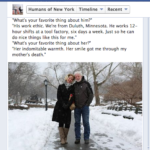Duluth Foreign Trade Zone
I had no idea there was land in Duluth that was (kind of) not part of the United States.
The comic book Threadbare, collecting comics from truth-out.org, talks about Foreign Trade Zones in the garment industry. But many industries use FTZs. According to mnftz.com:
Products moving through U.S. FTZs include electronics, computers, petroleum, pharmaceuticals, food products, office equipment, sporting goods, manufacturing components and more. Manufacturers, distributors and suppliers are all candidates for FTZ Subzones.
General Electric now manufactures refrigerators, stoves, dishwashers, washing machines and clothes dryers in an FTZ Subzone. This helps GE keep prices down and be more competitive in both U.S. and foreign markets.
Eastman Kodak manufactures a disposable camera in the Subzone. This helps them keep their prices down and enjoy a money-saving benefit. (Note from David: Keep their prices down AND enjoy a money-saving benefit? How could they possibly do both, he says, cynically.)
Oneida Limited manufactures and distributes stainless steel cookware. By taking advantage of FTZ policy regarding weekly Customs entry, significant cost savings were realized.
There are two FTZs in Greater Minnesota, one in Duluth, which makes sense, given our place as a port town. Oddly, the Twin Cities zones are less connected to the international transport of goods than their production. According to the website promoting the FTZs,
Currently there are eight General Purpose Zone sites in Minnesota including six in the Minneapolis/St. Paul area (FTZ#119) one site in Duluth (FTZ#51) and one site in International Falls (FTZ#259). The locations for the sites are as follows:
Minneapolis Convention Center
Saint Paul
Eagan Industrial Park
The Greater Airport Bloomington Site
Mid-City Industrial Park
Seaway Port Authority of Duluth
International Falls
Bloomington Central Industrial Area
SubzonesWhile it is easier and less expensive for a company to realize benefits by utilizing the general Zones in the Twin Cities area, any company in Minnesota can apply to make their existing facility a Subzone of FTZ #119.
I find it fascinating that I could, if I filed the right papers, locate an FTZ as far away from any border as possible. But why would I want to?
According to LSW:
What are the benefits of a Foreign Trade Zone?
• No duty Is ever paid on re-exported merchandise from a Foreign Trade Zone
• If the merchandise is sold domestically, no duty is paid until it leaves the Zone
• Generally, no duty is paid on waste or yield loss in a Foreign Trade Zone or Subzone
• Duty on scrap is eliminated or reduced in a Foreign Trade Zone
• Generally, if foreign merchandise is manufactured within a Foreign Trade Zone or Subzone into a product with a lower duty rate, then the lower duty rate applies on the foreign content when duty is paid
• Merchandise in a Foreign Trade Zone may be stored, repackaged, manipulated, manufactured, destroyed or otherwise altered or changed
The Port Authority runs our FTZ. I can’t imagine anything as … questionable happens in our FTZ as happens (as reported/alleged in Threadbare) in the Wal-Mart warehouse in Illinois that is classified as an FTZ. (Really? A Wal-Mart warehouse?) But I am suddenly very curious about this parcel of Duluth that is, in some ways, not quite part of the United States.
Recommended Links:
Leave a Comment
Only registered members can post a comment , Login / Register Here















2 Comments
rev
about 7 years agoDavid Beard
about 7 years ago